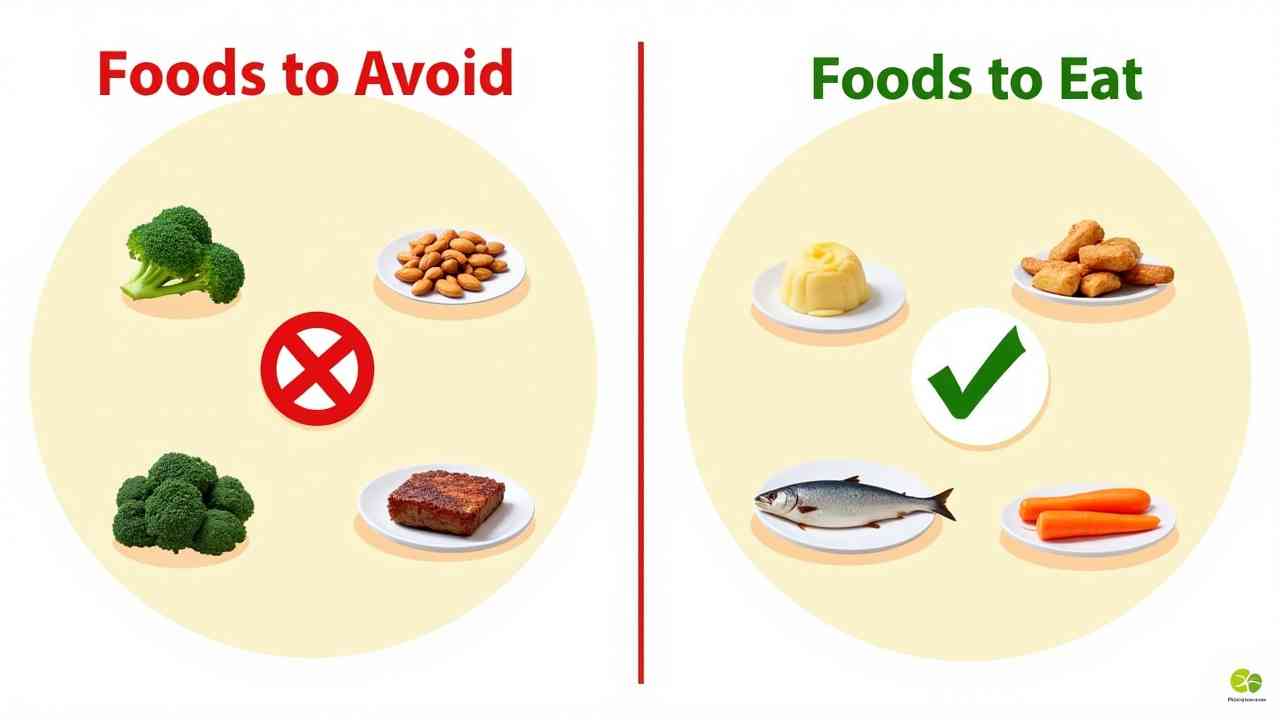
🩺 A Guide to the GI Soft Diet (For a Happy Gut)
🩺 A Medical Guide to the GI Soft Diet (For a Happy Gut) 🩺
❗ CRITICAL MEDICAL WARNING: A gastrointestinal (GI) soft diet is a short-term, therapeutic diet. It is prescribed by a doctor for specific medical reasons. You must only follow this diet under the guidance of your healthcare team. It is not a weight loss plan and is not intended for long-term use.
If you are recovering from surgery or experiencing a flare-up of a digestive condition, your doctor may have recommended a GI soft diet. This can be a confusing time. The food list is often the opposite of what is normally considered "healthy." The goal is not long-term nutrition, but short-term healing.
This guide will explain what this diet is. We will provide a clear list of what to eat and what to avoid. Let's make this temporary eating plan as simple as possible. ✅
🤔 Why is a GI Soft Diet Prescribed?
The purpose of a GI soft diet is to give your digestive system a rest. The foods on this diet are very easy to chew, swallow, and digest. This reduces the workload on your stomach and intestines. This allows them to heal.
This diet is often a transitional step. It is used after you have been on a liquid diet. It helps your body slowly get used to solid food again. It is commonly prescribed for:
- Recovery from stomach or intestinal surgery.
- Flare-ups of conditions like diverticulitis, Crohn's disease, or ulcerative colitis.
- Problems with chewing or swallowing.
- What Are the Key Principles of This Diet?
The rules of a GI soft diet are all about texture and digestibility. The food you eat should be soft, low in fiber, and bland. The main principles are:
- Soft Texture: All foods should be easily mashed with a fork.
- Low in Fiber: You will avoid high-fiber foods that are hard to digest.
- Low in Fat: You will avoid fried, greasy, and high-fat foods.
- Bland Seasoning: You will avoid spicy and highly seasoned foods.
✅ What Foods Are Generally Allowed?
On this diet, you will choose foods that are very easy on your gut. This means refined grains and well-cooked vegetables without skin. Here are the foods you should focus on.
- Refined Grains: White bread, white rice, plain crackers, and pasta made from white flour are the staples.
- Well-Cooked Vegetables: Vegetables must be well-cooked and have no skins or seeds. Good choices include peeled carrots, green beans, and peeled zucchini. Mashed potatoes (without skin) are also great.
- Soft Fruits: Ripe bananas, applesauce, and canned fruits (without skin) are good choices.
- Tender Protein: Lean, tender, well-cooked poultry, fish, and eggs are perfect. Ground meats are also a good option.
- Dairy: Milk, plain yogurt, and cottage cheese are usually allowed in moderation.
🚫 What Foods Must Be Strictly Avoided?
This is the most important part of the GI soft diet. You must avoid all foods that are hard to digest. These foods create more residue and make your digestive system work harder.
- All Raw Vegetables: No salads of any kind.
- Most Raw Fruits: Especially those with skins or seeds, like apples and berries.
- All Whole Grains: This includes whole-wheat bread, brown rice, oatmeal, and quinoa.
- All Dried Fruits, Nuts, and Seeds.
- All Legumes: This means no beans, chickpeas, or lentils.
- Tough, Fatty, or Fried Meats: This includes steak, bacon, and fried chicken.
- Spicy Foods: Avoid hot peppers, curries, and strong spices.
Remember, this is a temporary diet for a healing phase. The cozy autumn season is a perfect time to enjoy a warm, simple, and comforting meal from the "allowed" list. Follow your doctor's instructions carefully. Soon, you will be able to gradually reintroduce more fiber and variety back into your diet. 🥣